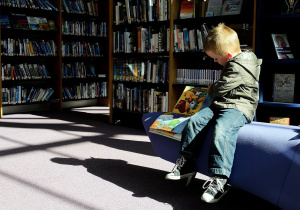The question of why schools in Spain remained open while other countries switched to distance learning remains open. Photo: Pixabay
Why hasn’t Spain switched to distance learning, unlike other countries?
For months, schools in Spain remained open and students attended classes despite fluctuating coronavirus cases. But the situation was different in other countries.
According to a recent OECD report, Spain was one of the world’s worst-performing countries for missing “normal” school time in 2020. That contrast has only widened since the start of the year, when schools and education centres in Spain remained open while many neighbouring countries moved students to distance learning.
Despite the increase in cases after Easter, experts believe that Spain is unlikely to close schools in the third semester, as teachers are already being vaccinated. In addition, the warm weather will allow for active natural ventilation in classrooms, which will reduce the risk to schoolchildren.
Spain ranks 10th among 30 countries on the OECD list for the fewest days students missed in 2020. Depending on the school calendar in the regions, this figure is around 50 days. Interestingly, since the beginning of 2021, nine countries above Spain have temporarily switched to distance learning.
Experts say there are several reasons to explain this phenomenon.
This is primarily due to the strict protocols in place in Spanish schools that help prevent infections:
- mandatory use of masks by all students over the age of six,
- compliance with distancing measures,
- maintaining preventive quarantines in classrooms where at least one case of infection has been recorded.
Photo: Pixabay. Also important is the warm climate, which allows you to open windows to ventilate the rooms.
Another factor, according to experts, is the decisive position of the authorities, who emphasize the importance of maintaining the classroom-lesson system of education. This decision was strengthened after the negative experience of the 2020 lockdown and the subsequent criticism of the decision to keep schools closed at the end of the last school year, when the epidemiological situation in the country improved significantly and many other types of activities were allowed to resume. For example, instead of opening schools, bars and cafes were allowed to operate.
Thanks to hygiene protocols and the fact that schoolchildren are less likely to get sick than other age groups, the number of infections in schools remains low. By the end of the second semester, only 0.4% of classes in Spain were in quarantine.
Given the current epidemiological situation, experts believe that the likelihood of school closures, even despite the presence of a fourth wave of the epidemic, is currently quite low, mainly because the fourth wave is not on the same scale as the previous three.
If schools were not closed in the winter, when vaccinations were just beginning and the weather was much colder than it is now, then there is practically no reason to assume the possibility of such a decision at the moment. This opinion of experts is also supported by the lack of confirmation of the impact of new strains of coronavirus on the statistics of its spread among schoolchildren.
